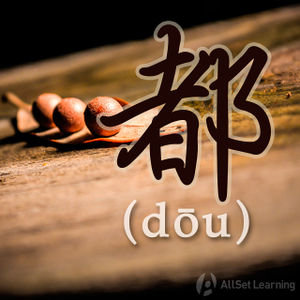Difference between revisions of "Indicating the whole with "quan""
(Created page with "{{Grammar Box}} {{Stub}} == Structure == <div class="jiegou"> 全+Noun. </div> == Examples == <div class="liju"> * 我们 <em>全</em>家 都 去 旅游 了。 * 明天...") |
|||
| Line 34: | Line 34: | ||
== Sources and further reading == | == Sources and further reading == | ||
| − | [[Category: | + | [[Category:B1 grammar points]] |
| − | {{Basic Grammar|全| | + | {{Basic Grammar|全|B1|全+Noun.|我们 <em>全</em>家 都 去 旅游 了。|grammar point|ASGCPDSR}} |
{{Similar|Referring to "all" using "suoyou"}} | {{Similar|Referring to "all" using "suoyou"}} | ||
{{Similar|Expressing "Every" with "mei" and "dou"}} | {{Similar|Expressing "Every" with "mei" and "dou"}} | ||
Revision as of 15:12, 24 January 2013
-
Level
-
Similar to
-
Used for
-
Keywords
| This article is a stub. Editors can help the Chinese Grammar Wiki by expanding it. |
Structure
全+Noun.
Examples
- 我们 全家 都 去 旅游 了。
- 明天 我 全 天 都 呆 在 家里。
- 你 知道 全 国 有 几 个 省 吗?
- 现在 是 全 球 经济 发展 最 快 的 时候。
- 全世界 的 人 都 知道 我 是 谁,你 不 知道?
- 这 场 战争 影响 到 全美国。
- 请 你 读 一下 全 文。
See also
- Referring to "all" using "suoyou"
- Expressing "Everyone" with "shei"
- Expressing "All" with "shenme dou"
- Expressing "Every" with "mei" and "dou"
- Emphasizing quantity with "dou"



